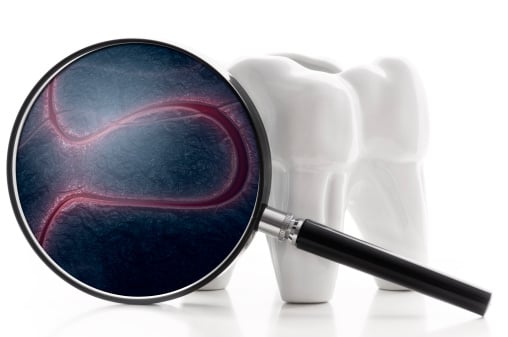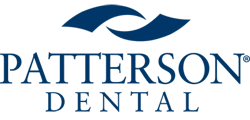
COVID-19 is forcing many in dentistry to change the status quo and rethink our wellworn approaches to clinical patient care. I submit the following thoughts, not as the only acceptable way to do things, but as a viable approach to screening and home care techniques for the treatment of periodontitis in the current pandemic environment.
One of the many consequences of COVID-19 is that dental hygienists and dentists need to do their part as the “essential caregivers” that the US Department of Homeland Security Cybersecurity and Infrastructure Security Agency (CISA) and the Federal Emergency Management Agency (FEMA) recognize them to be.1,2 With our essential skills, dental health-care professionals can help our patients eliminate active periodontal infections and decrease systemic levels of inflammation, potentially improving their ability to resist COVID-19 or achieve improved outcomes should they become infected.
Infections throughout the body have shown that they may initiate changes in the body’s immune response by eliciting production of pro-inflammatory biological mediators. Such chemicals upregulate immune response and signal patients’ immune systems to overreact. Such overreaction may be initiated by misidentifying “self” (e.g., autologous proteins or cells) as foreign bodies. This may be mediated by alterations caused through interaction with pathogens that alter human tissues. The treatment of ongoing chronic infections, such as periodontal disease, is one method of eliminating such activated materials by reducing intraoral microbial loads and healing the ulcerated pocket epithelium present in gingival inflammation.
It is well-established that the effects of periodontal disease extend beyond the oral cavity. The COVID-19 crisis has impacted all aspects of our day-to-day lives. Many of the public’s normal concerns, including oral health, have been put on the back burner compared to our concerns regarding COVID-19 and its morbidity and mortality. In the current climate, it may in fact be even more important to reduce potential infections and systemic inflammatory burden. It has even been postulated that reduction in local and systemic levels of infection could protect against the most severe COVID-19 outcomes.3 Establishing ideal oral health, including the treatment of periodontal disease, has the potential to influence even COVID-19 outcomes.
Current evidence
Dr. Mia Geisinger and Katrin M. Sanders’s webinar, Creaky joints and bleeding gums: RA and periodontitis, highlighted the link between sulcular pathogens that can migrate through ulcerated sulcular epithelium and the autoimmune condition, rheumatoid arthritis (RA).4 This important link reminds us once again that intact, healthy sulcular epithelium is a key barrier that prevents over 700 known microbial species that are present in the oral cavity from adversely affecting systemic health. As such, comprehensive assessment, prevention, and treatment of periodontal conditions may be critical to establishing resistance for other exogenous infections, like COVID-19.
Dr. Scott Froum’s article, Can periodontal disease be a contributing factor for COVID-19 severity? asks if the systemic impact of periodontitis on our immune system may also explain some of the diverse symptomatology and survival rates we see in the population.5 Periodontitis is, in many respects, a silent disease. While we as dental health-care professionals realize the critical import of treating periodontal diseases, many patients do not recognize the signs of periodontal disease or the importance of periodontal health. Given our concerns regarding the widespread systemic impact of periodontitis, it is critical that we identify the periodontal disease burden and address this important disease. The RF Bleeding Index technique uses the presence of bleeding from the interproximal tissues following the interdental picks (GUM® Improved Soft-Picks) being placed to the depth of the sulcus floor and pushed along it to the lingual aspect. The pick is then withdrawn, and the presence or absence of bleeding is noted. Bleeding is a sentinel sign of active disease and can indicate the presence of infection and ongoing periodontal disease.6
To help patients achieve improved periodontal health, dental health-care providers will ideally have a quick, simple test to assess the level of interproximal tissue health and an equally simple aid to healing these infected and ulcerated sulcular tissues. The RF Bleeding Index may offer such a technique to assess interproximal periodontal health while at the same time utilizing the pick as a simple healing aid as outlined in the article The Swedish wonder. These techniques will allow patients and practitioners to establish parameters for surveillance of periodontal health. To better understand the impact of the RF Bleeding Index and to implement it in clinical practice, review the following published articles in DentistryIQ:
Concluding thoughts
Dental health-care providers are indeed essential and are critical to the maintenance of oral and overall health. It is important that as essential health-care providers, we are open to expanding our knowledge and our clinical repertoires to best serve our patients. The RF Bleeding Index may be one such tool that will allow you to better diagnose and treat your patients.
Many years ago, I asked one of my mentors, Dr. Gordon Christensen, about his thoughts on this technique. He encouraged me and suggested that I demonstrate its effectiveness through case presentations with before and after examples of this technique when used by patients in my practice. When exposed to the results, Dr. Christensen became intrigued and advocated for its use in several training programs for dental hygiene. Expansion of this exposure could allow for improved diagnosis and targeted treatment of periodontal and gingival inflammation and, through that treatment, also improve systemic health.
Envisioning an ideal future
The coronavirus pandemic has highlighted the need for interdisciplinary care. Appointing an oral health advocate in every hospital could allow for the recognition and integration of oral health into patients’ overall health-care plans. It is well established that in many cases of nosocomial (i.e. hospital-transmitted) pneumonia, the causative bacterial agents are of oral origin.7 Given the low level of import assigned to oral hygiene for hospitalized patients, particularly those who cannot deliver oral hygiene themselves (e.g. those on a ventilator due to severe respiratory distress) there is a significant chance that poor oral hygiene will impact their overall disease course and well-being. Additionally, controlling distant sources of infection and inflammation prior to surgical intervention is critical to delivering optimal outcomes. Periodontal disease should be recognized as a potential source for such infection and inflammation, and the interprofessional team should work to control periodontal conditions prior to non-emergent surgical treatment. An oral health advocate could serve as a liaison to advocate for patients and to discuss the implications of periodontal infections with physicians, nurses, and other medical care staff. They could potentially employ the RF Bleeding Index as a simple technique to identify at-risk patients. Ideally, hospital CEOs could assess the value of an oral health advocate through the decrease in morbidity and mortality and rehospitalization rates of patients undergoing care within their hospital systems.
Disclaimer: This article is for informational purposes only and should not be construed as clinical advice. Products should be used in accordance with manufacturer instructions.
__________
Dr. William Fell
References
1. Krebs CC. Memorandum on identification of essential critical infrastructure workers during COVID-19 response. US Dept. of Homeland Security Cybersecurity & Infrastructure Security Agency. March 19, 2020. https://www.cisa.gov/sites/default/bles/publications/CISA-Guidanceon- Essential-Critical-Infrastructure-Workers-1-20-508c.pdf
2. COVID-19 pandemic operational guidance for the 2020 hurricane season. US Dept. of Homeland Security Federal Emergency Management Agency. May 2020. https://www.fema.gov/media-library-data/1589997234798-adb5ce5cb98a7a89e3e1800becf0eb65/2020_Hurricane_Pandemic_Plan.pdf
3. Pitones-Rubio V, Chávez-Cortez EG, Hurtado-Camarena A, González-Rascón A, Serafín-Higuera N. Is periodontal disease a risk factor for severe COVID-19 7 illness? June 19, 2020. Med Hypotheses. 2020;144n109969. doin10.1016/j.mehy.2020.109969
4. Geisinger ML, Sanders KM. Creaky joints and bleeding gums: RA and periodontitis. Dental Economics webinar. June 22, 2020. https://www.dentaleconomics.com/home/webinar/14177519/dentsplysirona-creaky-joints-and-bleeding-gums-ra-and-periodontitis
5. Froum S. Can periodontal disease be a contributing factor for COVID-19 severity? Perio-Implant Advisory. July 8, 2020. https://www.perioimplantadvisory.com/clinical-tips/periodontalcomplications/ article/14179112/can-periodontal-disease-be-a-contributingfactor-for-covid19-severity
6. Chapple ILC, Mealey BL, Van Dyke TE, et al. Periodontal health and gingival diseases and conditions on an intact and a reduced periodontium: Consensus report of workgroup 1 of the 2017 World Workshop on the Classibcation of Periodontal and Peri-Implant Diseases and Conditions. J Periodontol. 2018;89 Suppl 1nS74-S84. doin10.1002/JPER.17-0719
7. Scannapieco FA. Pneumonia in nonambulatory patients. The role of oral bacteria and oral hygiene [published correction appears in J Am Dent Assoc. 2008 Mar;139(3)n252]. J Am Dent Assoc. 2006;137 Suppln21S-25S. doin10.14219/jada.archive.2006.0400 William
William Fell, DDS, is a member of the 1968 first graduating class of UCLA dental school. He was involved with research projects on electronic patient interaction, patient data, instruction and student abilities to review all lectures after the fact at electronic libraries. He also did research to improve casting accuracy at UCLA. He has dental and nondental patents. His article, One visit composite and amalgam bonding for strong aesthetic posterior restorations, has been published in JADA.
This submission is included in the JADA+ COVID-19 monograph as a Clinical Observation entry and has not been peer reviewed.This piece was first published on July 28, 2020, in DentistryiQ.
Stock Photo Credits: dem10/e+/Getty Images


